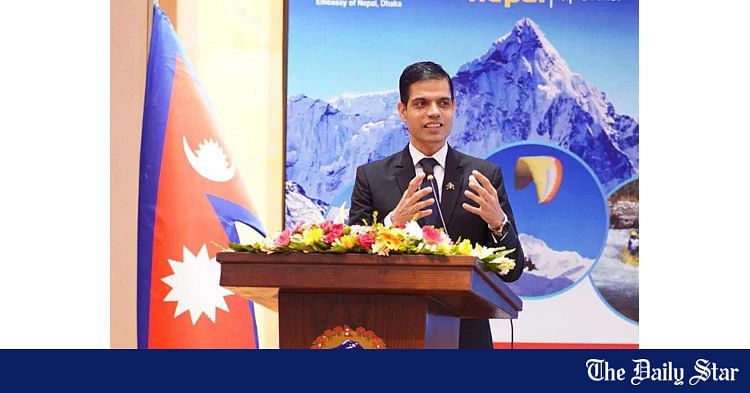Saif
Senior Member
- Joined
- Jan 24, 2024
- Messages
- 15,397
- Reaction score
- 7,865
- Points
- 209
- Nation

- Residence

- Axis Group

Bangladesh, Nepal discuss cooperation in trade, commerce, hydropower sectors
UNB
Published :
Sep 30, 2024 00:10
Updated :
Sep 30, 2024 00:10

Bangladesh and Nepal have discussed cooperation in different areas including trade, commerce, hydropower and people-to-people level collaboration in particular in the area of education.
The two sides agreed to work together to address challenges as both the countries are slated to graduate to developing country status.
Ambassador of Nepal to Bangladesh Ghanshyam Bhandari met Foreign Secretary Md Jashim Uddin on Sunday at the Ministry of Foreign Affairs and discussed the issues.
The Ambassador congratulated the Foreign Secretary on assuming this new responsibility.
Both the Foreign Secretary and the Ambassador expressed satisfaction at the meeting held in New York between thr Chief Adviser of Bangladesh and the Prime Minister of Nepal on the sidelines of the UNGA, said the Ministry of Foreign Affairs.
The Ambassador of Nepal mentioned about the excellent bilateral relations between Nepal and Bangladesh and underscored the importance of enhanced economic engagement between the two countries.
Both sides underscored the need to work closely at SAARC, BIMSTEC and other regional and multilateral fora.
UNB
Published :
Sep 30, 2024 00:10
Updated :
Sep 30, 2024 00:10
Bangladesh and Nepal have discussed cooperation in different areas including trade, commerce, hydropower and people-to-people level collaboration in particular in the area of education.
The two sides agreed to work together to address challenges as both the countries are slated to graduate to developing country status.
Ambassador of Nepal to Bangladesh Ghanshyam Bhandari met Foreign Secretary Md Jashim Uddin on Sunday at the Ministry of Foreign Affairs and discussed the issues.
The Ambassador congratulated the Foreign Secretary on assuming this new responsibility.
Both the Foreign Secretary and the Ambassador expressed satisfaction at the meeting held in New York between thr Chief Adviser of Bangladesh and the Prime Minister of Nepal on the sidelines of the UNGA, said the Ministry of Foreign Affairs.
The Ambassador of Nepal mentioned about the excellent bilateral relations between Nepal and Bangladesh and underscored the importance of enhanced economic engagement between the two countries.
Both sides underscored the need to work closely at SAARC, BIMSTEC and other regional and multilateral fora.







